Oh, Canada! Such a beautiful and vast country! I moved here from the UK in 2016 and I am still learning new things about Canada every day. Whether you are coming here to visit, planning to move here, or are already calling Canada your home, this quick guide will hopefully teach you a few things about the place that I call home.
Basic Facts About Canada
Established: July 1, 1867
Name Meaning: Canada is derived from “Kanata”, a Huron-Iroquois word meaning village or settlement.
Countries Motto: “From sea to sea”
Population: 37.59 million (2019)
Places To Live: Ten Provinces & Three Territories
Capital City: Ottawa, Ontario
Prime Minister: Justin Trudeau
Queen: Queen Elizabeth II
Currency: Canadian Dollars
Languages
The official languages in Canada are English & French.
In Quebec the official language is French. In all other Provinces & Territories, it is English
New Brunswick is the only officially bilingual province,
Canadian Clock
The Canadian clock uses the “12-hour” model (1:00 am to 12 noon followed by 1 pm to 12 midnight).
Every Canadian province and territory except Saskatchewan practices Daylight Savings Time.
Canadian clocks are set forward one hour for “spring forward” on the second Sunday in March, and they are set back one hour for “fall back” on the first Sunday in November. This November to March period is Standard Time (also known as “Winter Time”) and March to November is Daylight Time (“Summer Time”).
Time Zones In Canada
The country spans six time zones (over 4.5 hours), from east to west: Pacific (PT), Mountain (MT), Central (CT), Eastern (ET), Atlantic (AT), Newfoundland (NT)
The official time of Canada is recorded in 24-hour Eastern Time and it’s set by the atomic clocks of the National Research Council.
Climate
The climate in Canada is seasonal: winter (November-March); summer (June-August)
The highest temperatures in Canada are usually 25-30 degrees between the coasts but in some interior locations temperatures occasionally exceed 40 degrees.
The lowest temperatures in Canada are around -40 degrees.
Land Mass of Canada

Canada is 9,985 Km2 making it the second largest country in the world (after Russia).
It touches three oceans: the Pacific, the Arctic, and the Atlantic oceans making it the country with the longest coastline (243,791 km. long).
The Trans-Canada highway is said to be the longest national highway in the world as well.
The country’s coordinates are: 60° 00 N, 95° 00 W
Land & Sea Borders
Land Borders: America (south land border & northwest land border with Alaska 8,893 km)
Sea Borders: Greenland/Denmark (via the Arctic Ocean), France (via the Atlantic Ocean)
Regions of Canada
Canada is divided into five regions:
The Atlantic Region
Population: 2.3 million people (apx)
Climate: Cool winters and cool, humid summers
- Newfoundland and Labrador (St. John’s)
- Prince Edward Island (Charlottetown)
- Nova Scotia (Halifax)
- New Brunswick (Fredericton)
This region has a rich history as Nova Scotia is known as the gateway to Canada, and Newfoundland and Labrador is the oldest colony of the British Empire. It is known for fishing, farming, forestry, and mining.
Central Canada
Population: Over 18 million people
Climate: Cold winters and warm humid summers.
- Quebec (Québec City)
- Ontario (Toronto)
This is where more than half of the population of Canada lives, and it is where the National Capital, Ottawa, is located. It’s known as the industrial and manufacturing heartland of Canada.
The Prairie Provinces
Population: Over five million people
Climate: Cold winters and hot summers.
- Manitoba (Winnipeg)
- Saskatchewan (Regina)
- Alberta (Edmonton)
The Prairies is Canada’s fastest-growing region. It is known for rich energy resources so both mining and hydro-electric power generation thrive here. The largest uranium mine in the world is at Cigar Lake in Saskatchewan while Alberta is the country’s largest producer of oil and gas. After Venezuela and Saudi Arabia, Canada is the third-largest oil reserve holder in the world and the seventh-largest producer of oil.
This region also has some of the most fertile farmlands in the world so agriculture is one of its main industries. Alberta is one of the world’s major beef producers, while wheat, grains, and oilseeds are harvested in Saskatchewan.
The Pacific Region (West Coast)
Population: Four million people apx
Climate: Temperate weather with warm airstreams coming from the Pacific Ocean.
- British Columbia (Victoria)
British Columbia is Canada’s Pacific Gateway, and it is known for its majestic mountains, the sea-to-sky highway, and an extensive park system with about 600 provincial parks.
Forestry (lumber and paper products) mining, shipping, and fishing are the main industries.
The Northern Territories
Population: Only about 100,000 people (due to climate and remoteness)
Climate: Long cold winters (arctic climate) and short cool summers.
- Nunavut (Iqaluit)
- Northwest Territories (Yellowknife)
- Yukon Territory (Whitehorse)
A third of Canada’s land mass is in the Northern Territories. The region is called the “Land of the Midnight Sun” because at the height of summer, daylight can last 24 hours, but in winter there is darkness for three months.
The region is rich in natural resources such as gold, lead, copper, diamond, and zinc. Some people in the region earn their living by hunting, fishing, and trapping.
Provinces & Territories

Canada is made up of 10 Provinces and 3 Territories.
Provinces:
- Alberta (AB): Capital City is Edmonton
- British Columbia (BC): Capital City is Victoria
- Manitoba (MB): Capital City is Winnipeg
- New Brunswick (NB): Capital City is Fredericton
- New Foundland & Labrador: Capital City is St John’s
- Nova Scotia (NS): Capital City is Halifax
- Ontario (ON): Capital City is Toronto
- Prince Edward Island (PE): Capital City is Charlottetown
- Quebec (QC): Capital City is Quebec City
- Saskatchewan (SK): Capital City is Regina
Territories:
- Northwest Territories (NT): Yellowknife
- Yukon (YT): Whitehorse
- Nunavut (NU): Iqaluit
A Forested Country
Canada is the third most forested country in the world, with about half of its landmass covered by forests.
There are about 180 tree species across the country so it’s no surprise that timber is among the main exports of the country.
Lakes, Rivers & Bays In Canada
Lakes
Over half of the World’s lakes are in Canada.
There are more than 3 million lakes, with 31,700 big lakes that are over 300 hectares. Two of the biggest lakes in the world are in Canada: Great Bear Lake and Great Slave Lake.
Rivers
There are more than 8,500 named rivers in Canada. The longest river is the McKenzie River in the North West which is 4,241 km long.
Bays
There are also 14 bays in Canada. The biggest bay is Hudson Bay which was discovered in 1610 by English explorer Henry Hudson. Located in Eastern Canada, it is 819,000 km2 and bounded by Nunavut territory (north and west), Manitoba and Ontario (south), and Quebec (east). It is frozen from about mid-December to mid-June every year.
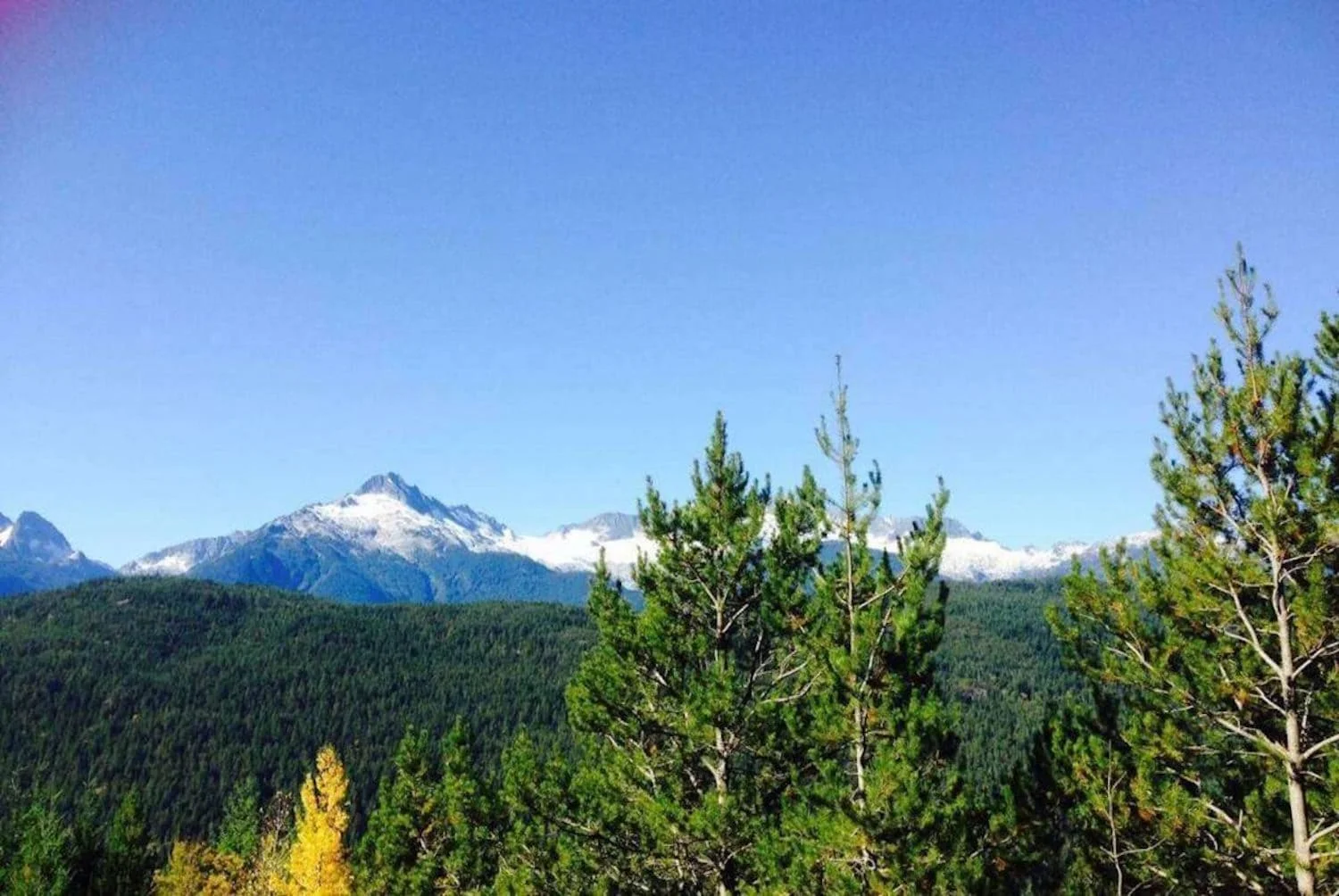
Mountain Ranges
There are 21,324 named mountains in Canada.
The highest mountain in Canada is Mount Logan which is 20km long and 5km wide. It is located in the Yukon Territory at the border with Alaska.
The longest mountain range is the Canadian Rockies which is 1460km long and 180 km wide.
British Columbia has the most mountain ranges, and the highest summit in the province is Mount Waddington which is 4,019 m (13,186 ft) in the Pacific Ranges of the Coast Mountains.
Islands in Canada
Everything in Canada is big and islands are no exception. There are more than 30,000 islands spread out across this vast country.
Some of the main islands are:
- Haida Gwaii (Queen Charlotte Islands), British Columbia.
- Gulf Islands, British Columbia.
- Vancouver Island, British Columbia.
- Manitoulin Island, Ontario.
- Pelee Island, Ontario.
- Thousand Islands, Ontario.
- Bonaventure Island, Quebec.
- Magdalen Islands, Quebec.
Earthquakes in Canada
Earthquakes are a regular occurrence in Canada, and they occur across the country. According to the Geological Survey of Canada, there are more than 4,000 earthquakes each year (about 11 per day).
Most earthquakes in the country are smaller than magnitude 3 so they are not felt. In Southwestern British Columbia or Southeastern Canada, you are more likely to experience a tremor, because these regions are two of the most seismically active zones in the country. They have been the sites of most of the significant Canadian earthquakes of the last 300 years (greater than magnitude 5)
Within the next 40 to 50 years there is at least a 5% to 15% likelihood that a “strong earthquake” will hit from the St. Lawrence River Valley to the Ottawa Valley which is an area that includes Quebec City, Montreal, and Ottawa. In southwestern British Columbia, there is at least a 30% chance an earthquake strong enough to cause “significant damage” (Insurance Board of Canada 2013)

Canadian Government
Canada is a Parliamentary Democracy headed by a Prime Minister which is based on the British system). It is also a constitutional monarchy with the Queen as the Head of State and the Prime Minister as the head of government
It is also like the United States as the 13 provinces and territories have their own separate governments with unique powers.
A Parliamentary Democracy consists of the Sovereign (Queen), the Senate, and the House of Commons.
3 Levels of Government:
- Federal Government: Based in Ottawa; Headed by Prime Minister
- Provincial & Territorial Governments: Headed by Premiers
- Municipal Governments: Led by Mayors
Senate: Unelected, upper chamber of parliament. Has the power to veto legislation.
House of Commons: Elected chamber of parliament, which creates most of the country’s national laws.
Governor General: Functions as Canada’s head of state, on behalf of the British monarch.
Canadian Constitution
The Canadian Constitution provides the rules that Canada’s government must follow. It consists of multiple documents that make up the highest levels of Canadian law.
These are the two most important documents in the Constitution:
Constitution Act of 1867: Outlines Canada’s system of government, including the structure of Parliament, the way elections work, the role of the monarchy, the powers of the executive branch, and the division of powers between the federal government and the provinces. Also known as the British North America Act.
Constitution Act of 1982: Dominated by a long section called the Canadian Charter of Rights and Freedoms, which outlines the civil rights of each Canadian citizen. The 1982 Act also describes the process of changing (amending) constitutional laws.
Canadian Political Parties
There are 4 main Political Parties in Canada:
The Liberal Party of Canada
This is the oldest, and most historically successful political party. It’s the party that is currently in power under Prime Minister Justin Trudeau.
The Liberal Party portrays itself as fiscally responsible, but socially progressive. They favor a free market economy and social programs like universal health care. They are strongly supportive of unrestricted abortion, LGBT rights, high rates of immigration, and combating climate change.
Conservative Party of Canada
Canada’s second-largest party in parliament is currently the Official Opposition to the Liberals. Their current leader is Erin O’Toole.
It was founded when the Progressive Conservative Party and the Canadian Reform Conservative Alliance Party merged in 2003.
They favor traditional values, low taxes, smaller, less intrusive governments, and a strong regime of law-and-order and military.
New Democratic Party
The New Democratic Party (NDP) was formed during the Great Depression (1929-1939) and is currently led by Jagmeet Singh. It has never been in power, and it usually comes in a distant third or fourth place in the parliamentary seat count.
The NDP is similar to the Liberal Party in terms of beliefs, but it is more aggressively progressive on matters like taxing the wealthy and large corporations, environmental regulation, and non-interventionist foreign policy.
Important social programs like healthcare and old age pensions are usually partially credited to the NDP due to their deal-making when parliaments have been closely divided.
The Green Party of Canada
The Green Party of Canada has been around for over 30 years’ but it didn’t start winning decent numbers of votes until the early 2000s, and it didn’t start electing members of Parliament until 2011. The party leader is currently Annamie Paul.
The party is known for raising awareness of the environment and advocating the most dramatic measures against things like mining and fossil fuels.
The Bloc Quebecois
This party is Canada’s leading separatist political party, and it was founded in 1990. The Bloc is a national party with quite left-wing views. It only ever runs candidates in Quebec so it would never form the government of Canada. It is currently led by Yves-François Blanchet
Canadian Elections
There are 4 types of Canadian Elections:
- National Elections: Picks members of the House of Commons (Federal Election/Canadian General Election)
- Provincial Elections: Picks people to sit in one of the 10 provincial parliaments.
- Municipal Elections: Picks city-level officials (mayor, city council and school board etc; sometimes regional boards & councils too)
- By-elections: Can be national, provincial, or municipal. These are small, emergency elections held outside the schedule of regular ones
Election Schedule: All elections are typically held every four years
Eligibility To Vote: Any citizen of Canada over the age of 18 is eligible to vote in a federal, provincial or local election (Including Canadians living abroad via absentee ballots and Canadians in prison.
Canadian Tax System
Fiscal Year: April 1 to March 31
Canada Tax System: Relies on self-assessment by taxpayers
Tax Laws: Administered by the Canada Revenue Agency (CRA). Quebec is administered separately by Revenu Quebec
Three Types of Tax: Income Tax, CPP (Canadian pension plan), and EI (employer insurance).
Two Types of Income Tax: Federal & Provincial/Territorial
CPP: Everyone aged 18 to 65 has to make contributions that are matched by employers
Canada’s Economy & Industries
Canada is a trading nation, and commerce has always been the engine of economic growth.
In 1988, free trade with America was enacted and then Mexico became a partner in 1994 in the North American Free Trade Agreement (NAFTA). In 2008 there were over 444 million people and over $1 trillion in merchandise trade.
Canada’s economy is one of the biggest globally, and it is also part of the G8 group which is made up of leading industrialized countries including America, Germany, Japan, Russia, and the United Kingdom.
Three Main Types of Industries in Canada
- Service industries provide about 75% of Canadians with jobs in areas like health care, tourism, education, government, retail, construction, banking, transportation, and communications.
- Manufacturing industries in Canada make products including food, clothing, paper, machinery, automobiles, high technology equipment, and aerospace technology which are sold in Canada, as well as globally. America is Canada’s largest international trading partner.
- Natural resources industries are an important part of Canada’s history and development. These industries include agriculture, mining, energy, fishing, and of course forestry. Many areas of the country rely on natural resources for their economy, and they make up a big chunk of Canada’s exports.
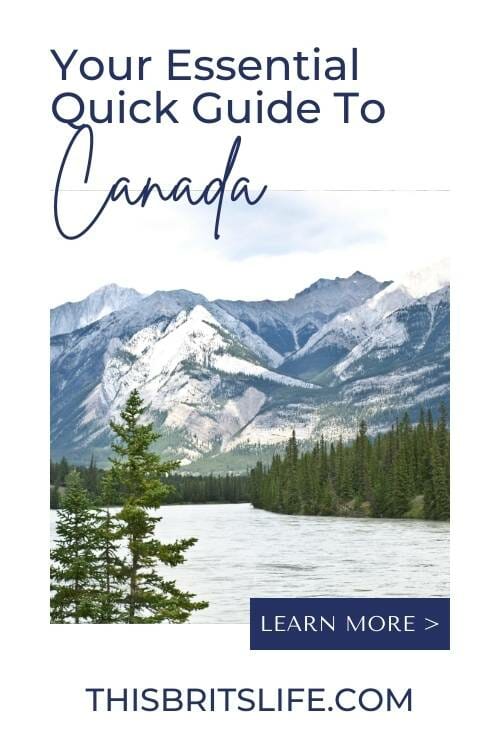
A Multicultural Country
Canada is the first country in the world to adopt a policy of multiculturalism, embracing diversity and pluralism.
Everyone in Canada is descended from immigrants, and about 80 percent of Canadians are of European background while the remaining 20 percent is a mix of other races in the world. In all the country is home to people of about 250 ethnic origins.
Canadian Immigration
With generous immigration laws, Canada has been consistently welcoming a very high intake of immigrants since the 1980s. The country typically approves over 250,000 immigrants every year as legal, permanent residents.
Generally, immigrants are seen as positively contributing to the growth of the Canadian economy, particularly by filling various low-skilled or low-paying jobs native-born Canadians are not interested in.
There is also a view amongst Canadians that welcoming immigrants is something Canada is morally obligated to do because Canada is a free, safe country with a history of welcoming people from all over the world who are fleeing poverty or oppressive governments.
Throughout Canadian history, there has also been a consistent theme of making the country larger to increase Canada’s wealth and power in the broader world.
Canadian Calendar
In Canada the week begins on Sunday, and dates are recorded in MM/DD/YY format (7/12/10 or July 12, 2010).
Canadians celebrate the beginning of a new calendar year on January 1 (“New Year’s Day“), but Canada’s fiscal year (calendar year for business and accounting purposes) is from April 1 to March 31.
Canada National Holidays
These are the annual national holidays in Canada. Dates for 2021 are.
- New Year: January 1
- Good Friday: April 2
- Easter Monday: April 5
- Victoria Day: May 24
- Saint-Jean-Baptiste Day: June 24 (Quebec only)
- Canada Day: July 1
- Civic Holiday: August 2
- Labour Day: September 6
- Thanksgiving Day: October 11
- Remembrance Day: November 11
- Christmas Day: December 25
- Boxing Day: December 26
Canada Day
Canada Day is a statutory holiday on July 1st. It commemorates the signing of the British North America Act (Constitution Act, 1867) that created Canada. This day was the Confederation of three British colonies into four provinces: The United Province of Canada (Ontario and Quebec), New Brunswick, and Nova Scotia. It used to be called Dominion Day.
10 Most Iconic Animals in Canada
- Beaver
- Moose
- Polar Bear
- Bison
- Southern Resident Killer Whale
- Walrus
- Caribou
- Atlantic Puffin
- Canada Lynx
- Beluga Whale
National Anthem of Canada
The Canadian National Anthem is “O Canada” which was composed in 1880 by Calixa Lavallée.
The lyrics to “O Canada” are:
O Canada!
Our home and native land!
True patriot love in all of us command.
With glowing hearts we see thee rise,
The True North is strong and free!
From far and wide,
O Canada, we stand on guard for thee.
God keep our land glorious and free!
O Canada, we stand on guard for thee.
O Canada, we stand on guard for thee.
National Animals of Canada
The beaver has been a national emblem since the 1700s when beaver pelts put Canada on the map. It was given official status as an emblem of Canada on March 24, 1975. It was also honored by the Hudson’s Bay Company who put the animal on their coat of arms.
The Canadian horse also became a national symbol in May 2002
The Maple Leaf
The maple leaf is the most commonly used symbol for Canada and appears pretty much everywhere.
It is so prominent for Canadians because for years, even before European settlers came to Canada, Indigenous Peoples have used maple sap as a food staple. So throughout history, the image of the leaf has been on coins, emblems, and coats of arms. The maple tree is also very important and it is the official arboreal emblem.
Three-quarters of the world’s maple syrup output is produced by Canada.
The Canadian Flag
It took 40 years for the Canadian Parliament to finally decide on their country’s flag.
The red and white flag with the prominent maple leaf was officially launched on February 15, 1965, making February 15 National Flag of Canada Day.
Canada’s National Sports
Hockey is Canada’s winter sport and there are over 2,800 hockey rinks in Canada.
Lacrosse is Canada’s summer sport.
Canada’s National Food
Poutine is Canada’s national food and it is delicious. It is chips (fries) covered in gravy and cheese curds.
Driving In Canada
Canadians drive on the right side of the road and most cars are automatic.
To drive in Canada as a tourist, long-term visitor, or permanent resident you will need a valid driver’s license.
Driver licenses from other countries like the United States and the UK are valid in Canada but only for a short time (up to 6 months). If you are visiting Canada for 6 months or longer you will need to either get an International Driving Permit or you will need to exchange your current license for a Canadian one.
Canada Resources
Lonely Planet Canada (Travel Guide)
DK Eyewitness Canada (Travel Guide)
The Rough Guide to Canada (Travel Guide with Free eBook) (Rough Guides)
Whether you are coming to Canada for a vacation, moving here, or applying for Canadian citizenship, I hope that this quick guide is helpful. Let me know in the comments if there is anything else you want to know that I haven’t covered and I will add it.
Learn More About Canada
- Lessons Learned From Living Abroad In Canada
- Ultimate Quick Guide To Canada
- Everything You Need To Know About Canadian Black Bears
- Canadian Tax Return: What You Need To Know To Make It Easy
Share Me
If you found this post helpful, share it or pin it! It’s one of the best ways to show your support. Thank you!
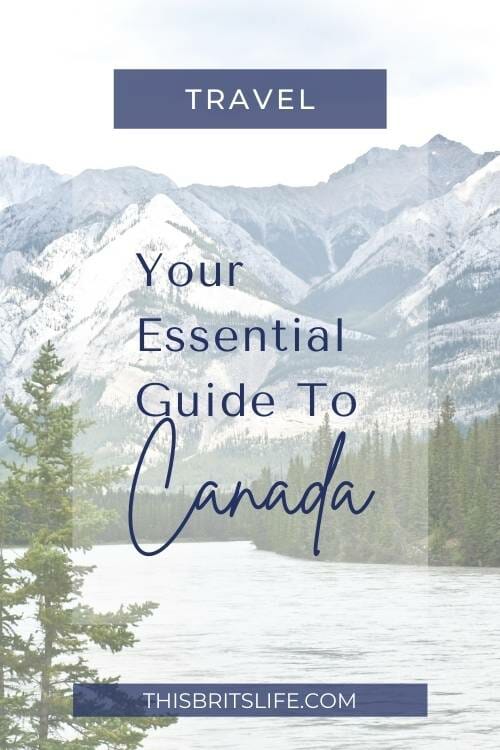
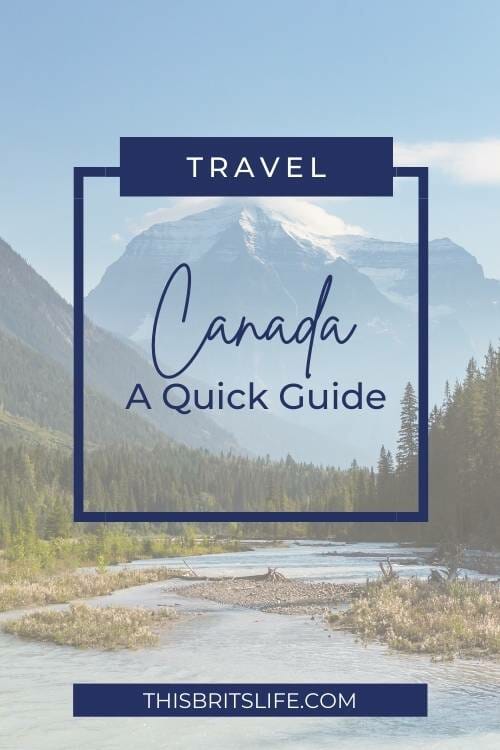
Gemma Lawrence is a British expat, solo female travel blogger, and the creator of This Brit’s Life — a travel and lifestyle blog that helps women explore the world confidently, live abroad independently, and stay informed about global issues.
Born and raised in England, Gemma has been living in British Columbia, Canada since 2016 and has been traveling solo for over a decade. With a background in journalism and over ten years of experience in digital marketing and communications — including leadership roles with the International Association of Business Communicators (IABC/BC) — she brings both storytelling and strategy to her writing.
Through her posts, Gemma shares practical solo travel advice, expat insights, and confidence-building resources, while also covering broader topics like women’s rights, democracy, and self-care. Her goal is to inspire independence, awareness, and personal growth — one adventure at a time
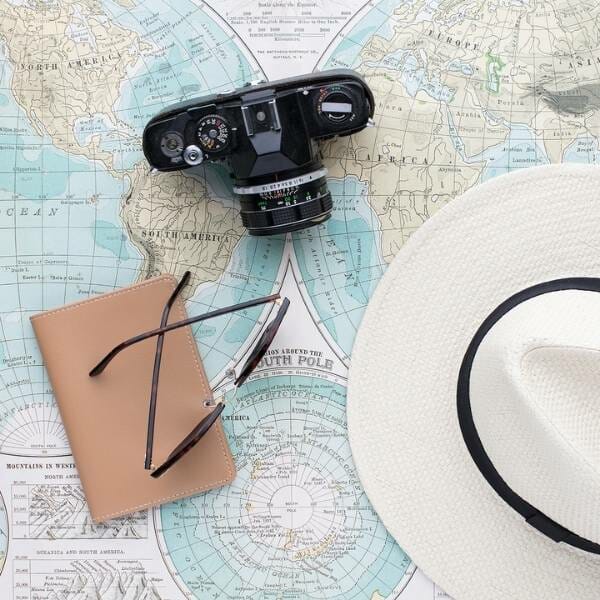




Great information of Canada! Great details!
Thank you! 🙂
Excellent info about Canada! I’ve never been and I’d love to visit.
Thank you! Hopefully you can come and visit sometime!
This is a great guide to Canada. Even though I’ve lived next door to Canada in two different states (one where I was only 15 miles from the border), I learned some cool facts!
Thank you! I learnt loads writing this guide too, and I’ve lived here for 5 years.
This is so informative. I loved reading all about Canada!
Thanks so much. Happy to hear that 🙂
Very thorough article! I was born and raised in Toronto, and truly love my country. Your section on earthquakes was interesting! I remember experiencing a few tremours over the years… nothing like California… or other parts of the world though.
Thanks so much. I love Canada too, it is definitely home now. I haven’t been to Toronto yet but its on my long travel destination list. Thankfully I haven’t experienced any tremors since I have lived here but I have an emergency preparedness kit just in case.
Wow! So many great facts here! I had no idea it was the 2nd largest country in the world or that half of the lakes were there! And now I have to visit because I want to see belugas! haha 🙂
Yes you should definitely come and visit! Beluga’s are so cute aren’t they! Let me know if you ever come to Vancouver 🙂